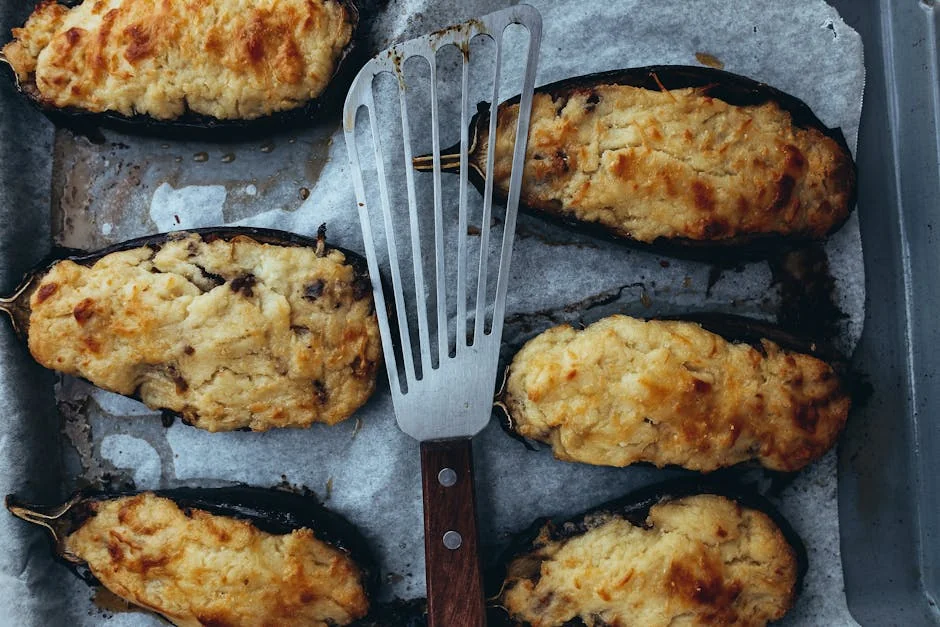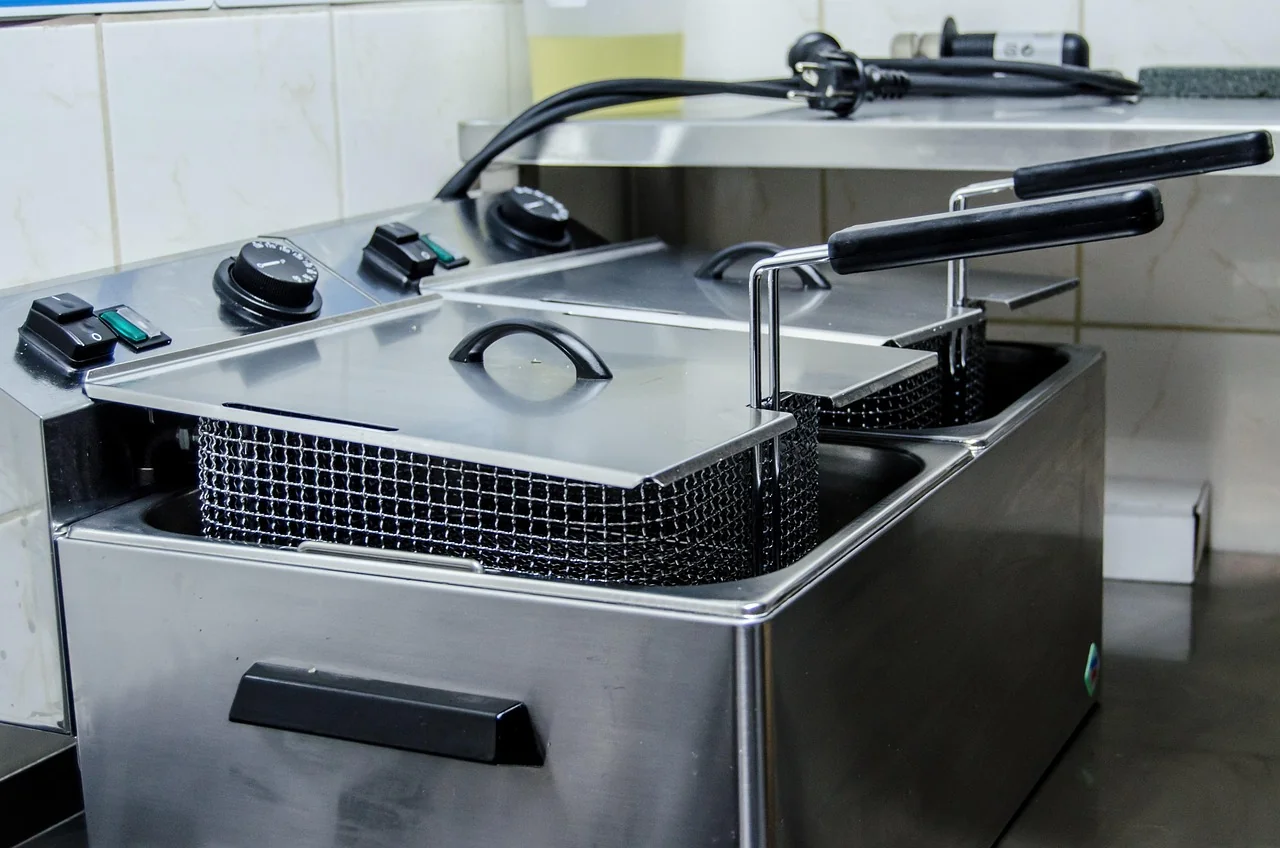Introduction
Crispy Air Fryer Schnitzel Recipe Guide
Ever craved that perfectly golden, impossibly crispy schnitzel without the guilt of deep frying? You're not alone. This beloved Austrian classic has graced dinner tables for generations, but traditional methods mean dealing with splattering oil, lingering smells, and excess calories. Enter the air fryer—a game-changer that delivers restaurant-quality results with minimal effort and cleanup.
A schnitzel recipe air fryer version is genuinely superior to conventional frying. This isn't just hype; it's backed by science. Air fryers circulate superheated air at high speeds, creating that coveted crispy exterior while keeping the meat tender and juicy inside. You'll achieve the same golden-brown perfection with up to 80% less oil.
In this comprehensive guide, you'll discover everything needed to master air fryer schnitzel. We'll explore what makes schnitzel a timeless favorite and why air fryer technology is the ideal cooking method. You'll learn the crucial differences between traditional and air fryer preparation techniques, understand the science creating that irresistible crispiness, and get actionable steps to prepare restaurant-quality schnitzel at home.
Whether you're a seasoned air fryer enthusiast or curious newcomer, this guide transforms you into a schnitzel expert. Let's get started.
What Is Schnitzel and Why Air Fryer Cooking Works Best
Schnitzel represents one of Europe's most beloved comfort foods—a thin, breaded cutlet of meat pounded to tender perfection and traditionally fried until golden. This Austrian and German classic has earned its place at dinner tables worldwide, prized for its crispy exterior and juicy interior. However, modern schnitzel recipe air fryer methods now deliver superior results compared to conventional deep-frying, offering home cooks a healthier, cleaner, and equally delicious alternative without sacrificing that coveted crunch.
The air fryer revolution has transformed how we approach breaded cutlets. Rather than submerging meat in hot oil, air fryer technology circulates superheated air at high velocities around the food, creating the same golden-brown crust through a process called the Maillard reaction. This method uses up to 80% less oil than traditional frying, significantly reducing calories while eliminating the lingering kitchen odors and splattering mess associated with deep-frying.
Traditional Schnitzel vs. Air Fryer Preparation
Traditional schnitzel preparation involves heating a large pot or skillet filled with oil to 350-375°F, then carefully placing breaded cutlets into the hot liquid. This method demands constant attention—flipping halfway through cooking, monitoring oil temperature, and managing splatters. The process also leaves your kitchen smelling like fried food for hours and requires proper disposal of used cooking oil.
Air fryer schnitzel eliminates these hassles entirely. Simply arrange your breaded cutlets in the basket in a single layer, spray lightly with cooking oil, and set the temperature to 380°F for 10-12 minutes. The enclosed chamber contains all heat and odors, your kitchen stays clean, and you achieve identical—often superior—results. The air fryer also cooks more evenly, reducing the risk of burnt edges or undercooked centers that can occur with traditional frying. If you're interested in exploring other breaded protein options, chicken thigh air fryer recipes offer similar crispy results with rich, juicy meat that resists drying out.
The Science Behind Air Fryer Crispiness for Breaded Cutlets
Air fryer crispiness stems from rapid moisture evaporation combined with the Maillard reaction. The intense, circulating heat rapidly removes surface moisture from your breaded coating, creating a dry environment where browning occurs efficiently. Simultaneously, amino acids and sugars in the breadcrumb coating interact with heat, producing hundreds of flavor compounds and that satisfying crunch.
Traditional frying achieves crispiness through oil absorption and heat, but the breading often becomes greasy and heavy. Air fryer technology maintains the coating's structural integrity while removing excess moisture, producing a lighter, crunchier texture. The consistent air circulation ensures every surface receives equal heat exposure, eliminating the uneven browning common in skillet-fried versions.
This scientific advantage makes air fryer cooking the optimal choice for schnitzel preparation, delivering restaurant-quality results with minimal effort and cleanup.
Essential Ingredients and Equipment for Perfect Air Fryer Schnitzel
Creating restaurant-quality schnitzel in your air fryer begins with understanding what ingredients and tools make the difference. The right combination of meat, coating, and equipment transforms a simple schnitzel recipe air fryer into a crispy, golden masterpiece. Investing time in proper preparation ensures consistent, delicious results every time you cook.
Selecting the Right Meat Cuts and Thickness
Chicken breast stands as the most popular choice for air fryer schnitzel, offering lean protein and mild flavor that pairs well with bold seasonings. Pork cutlets provide a slightly richer taste and forgiving texture that resists overcooking. Veal remains the traditional option for authentic schnitzel, though it commands a higher price point. Turkey breast offers a budget-friendly alternative with comparable results to chicken.
For pork enthusiasts, air fryer pork chops deliver similarly crispy, juicy results using the same cooking principles as schnitzel. The key is selecting uniform thickness to ensure even cooking throughout.
Thickness matters enormously when preparing schnitzel. Pound your meat to approximately ¼-inch thickness using a meat mallet, ensuring even cooking and that signature tender bite. Uniform thickness prevents thin edges from overcrisping while thicker portions remain undercooked. Place meat between plastic wrap or parchment paper before pounding to contain splatter and maintain cleanliness. For best results, purchase boneless, skinless cuts and trim any excess fat before beginning preparation.
Breadcrumb Coatings and Seasoning Combinations
Panko breadcrumbs deliver superior crispiness compared to regular breadcrumbs due to their larger, airier structure. Japanese panko creates that distinctive crunchy exterior that defines quality schnitzel. For enhanced flavor, pulse panko with dried herbs like oregano, thyme, or Italian seasoning before coating your meat.
Your breading station requires three bowls: one with all-purpose flour, another with beaten eggs, and a third with your seasoned panko mixture. This three-step breading process creates a professional coating that adheres perfectly during air frying. Add salt, black pepper, garlic powder, and paprika to your flour for extra seasoning depth. Some cooks incorporate finely grated Parmesan cheese into the panko for umami richness and golden color.
Essential Equipment and Tools
An air fryer with at least 4-quart capacity allows proper spacing between schnitzel pieces, ensuring even air circulation. A meat mallet with a flat side flattens cutlets uniformly without tearing delicate fibers. Invest in a quality spray bottle for applying cooking oil evenly across breaded surfaces—this step proves crucial for achieving crispiness without deep frying.
Consider purchasing parchment paper liners for your air fryer basket to prevent sticking and simplify cleanup. A meat thermometer guarantees perfectly cooked schnitzel every time, reading 165°F for poultry and 145°F for pork. These affordable tools eliminate guesswork and deliver consistent, safe results.
Step-by-Step Air Fryer Schnitzel Recipe Process
Creating restaurant-quality schnitzel at home becomes effortless when you follow a systematic approach. This detailed walkthrough ensures consistent, golden results every time you use your air fryer. By mastering each stage—from preparation through cooking—you'll transform simple chicken or pork cutlets into crispy, tender masterpieces.
Pounding and Preparing Your Cutlets Properly
Begin by selecting uniform cutlets, ideally ½-inch thick, as this thickness promotes even cooking throughout. Place each cutlet between two sheets of plastic wrap or parchment paper to contain splatter and mess. Using a meat mallet, pound gently but firmly with the flat side, working from the center outward toward the edges. This process breaks down muscle fibers, ensuring tenderness while maintaining the cutlet's structural integrity.
Once pounded, pat your cutlets completely dry using paper towels—moisture is the enemy of crispiness. Season both sides generously with salt and freshly ground black pepper, allowing the flavors to penetrate the meat. For added depth, incorporate garlic powder, paprika, or Italian seasoning into your seasoning blend. Let seasoned cutlets rest for five minutes before breading, allowing the salt to enhance moisture retention.
Breading Technique and Air Fryer Cooking Instructions
Set up your breading station with three shallow bowls containing all-purpose flour, beaten eggs, and panko breadcrumbs respectively. For extra crispiness, mix panko with grated Parmesan cheese and a pinch of cayenne pepper in the final bowl. Coat each cutlet lightly in flour, shaking off excess, then dip into egg, ensuring complete coverage. Finally, press firmly into panko mixture, coating both sides thoroughly—this layering creates the signature crunch.
Lightly spray your air fryer basket with cooking oil to prevent sticking and enhance browning. Arrange breaded cutlets in a single layer without overlapping, as air circulation is crucial for uniform cooking. Working in batches prevents overcrowding, which compromises texture and results in uneven cooking.
Achieving Golden Perfection: Temperature and Time Settings
Set your air fryer to 380°F (193°C) for optimal results with this schnitzel recipe air fryer method. Cook for 10-12 minutes, shaking the basket or flipping cutlets halfway through cooking. The schnitzel is perfectly done when the coating turns deep golden-brown and the internal temperature reaches 165°F (74°C) when measured with a meat thermometer.
For thicker cutlets, add 2-3 additional minutes to ensure the meat cooks through while the breading remains crispy. Remove cooked schnitzel immediately to a wire rack rather than a plate, preventing steam from softening the coating. Serve while hot with lemon wedges, fresh parsley, and your choice of dipping sauces for an authentic presentation that rivals traditional pan-fried versions.
Pro Tips and Tricks for Restaurant-Quality Air Fryer Schnitzel
Mastering air fryer schnitzel requires more than just following basic instructions—it demands attention to detail and professional techniques that transform ordinary cutlets into extraordinary meals. The difference between good and restaurant-quality schnitzel lies in understanding how to optimize texture, enhance flavor, and manage moisture throughout the cooking process. These expert strategies will elevate your schnitzel recipe air fryer results significantly.
Seasoning Strategies and Flavor Variations
The foundation of exceptional schnitzel begins with strategic seasoning that penetrates the meat rather than sitting on the surface. Season your pounded cutlets generously with salt and pepper at least 15 minutes before breading—this allows the seasoning to absorb into the meat fibers, creating deeper flavor throughout. Beyond traditional salt and pepper, experiment with adding garlic powder, paprika, or dried oregano to your flour mixture for Mediterranean-inspired variations.
For Asian-fusion schnitzel, incorporate ginger and soy sauce into your egg wash while maintaining the crispy exterior. Create a lemon-herb version by mixing fresh lemon zest with panko breadcrumbs and dried thyme. These flavor variations keep your air fryer schnitzel exciting while maintaining the classic crispy-tender contrast that defines the dish.
Coating Adhesion Secrets and Moisture Management
Achieving perfect coating adhesion starts with proper preparation of your cutlets. Pat your meat completely dry with paper towels—excess moisture prevents breading from sticking properly and creates steam that compromises crispiness. Double-dredging elevates your results dramatically: coat the cutlet in flour, then egg wash, then breadcrumbs, then repeat the egg wash and breadcrumbs one final time.
Use panko breadcrumbs instead of regular breadcrumbs for superior crunch and better moisture management. Spray your breaded cutlets lightly with cooking oil before air frying—this creates golden, crispy exteriors without deep frying. The oil spray is crucial because it promotes browning while keeping the interior tender and juicy.
Storage, Reheating, and Make-Ahead Preparation Methods
Prepare schnitzel ahead by breading cutlets up to 24 hours in advance and refrigerating them on a parchment-lined tray. This resting period actually improves coating adhesion and allows flavors to develop. Freeze breaded, unbaked schnitzel for up to three months—cook directly from frozen, adding just two minutes to your air fryer time.
Reheat leftover schnitzel at 350°F for four minutes to restore crispiness without drying out the meat. Store cooked schnitzel in an airtight container for up to three days. For meal prep, portion and freeze individual cutlets separately, allowing you to cook exactly what you need without thawing entire batches. If you're planning complete air fryer meals, sweet potatoes air fryer sides complement schnitzel beautifully with minimal additional cooking time.
Common Mistakes to Avoid When Making Air Fryer Schnitzel
Air fryer schnitzel offers convenience and impressive results, but several common pitfalls can derail your dish. Understanding these mistakes helps you achieve perfectly crispy, golden schnitzel every time. By recognizing and correcting these errors, you'll transform your air fryer cooking experience and consistently impress your family.
Overcrowding the Basket and Uneven Cooking Issues
One of the most frequent mistakes home cooks make involves stuffing too many schnitzel pieces into the air fryer basket at once. When you overcrowd the basket, hot air cannot circulate properly around each cutlet, resulting in uneven cooking where some pieces brown beautifully while others remain pale and undercooked.
Always arrange schnitzel in a single layer with adequate space between each piece. If you're preparing multiple servings, cook in batches rather than compromising quality for speed. This approach takes slightly longer but guarantees consistent, professional-quality results. Most standard air fryers can comfortably fit 2-3 medium schnitzel pieces per batch.
Additionally, flip your schnitzel halfway through cooking to ensure even browning on both sides. This simple step prevents one side from becoming overly crispy while the other remains insufficiently cooked.
Breading Separation and Soggy Results Prevention
Breading separation occurs when your coating lifts away from the meat, creating disappointing texture and presentation. This happens when moisture builds up between the schnitzel and breading, particularly when the meat isn't properly prepped before breading.
Pat your cutlets completely dry with paper towels before breading—moisture is your enemy. Use the traditional three-step breading method: dredge in flour, dip in beaten egg, then coat with breadcrumbs. Press the breadcrumbs gently but firmly onto each piece to create strong adhesion. For extra security, let breaded schnitzel rest in the refrigerator for 15-30 minutes before air frying.
Avoid using wet hands when handling breaded cutlets, as this reintroduces moisture. Lightly spray your finished schnitzel with cooking oil before air frying—this promotes crispiness and helps the coating stay intact during cooking.
Troubleshooting Undercooked or Overly Browned Schnitzel
Temperature control determines whether your schnitzel achieves perfect doneness. Set your air fryer to 380-400°F (193-204°C) and cook for 10-12 minutes, depending on cutlet thickness. Thinner cutlets cook faster, so monitor them closely to prevent burning.
If your schnitzel consistently turns out undercooked, increase the temperature by 10 degrees and extend cooking time by 1-2 minutes. Conversely, if pieces brown too quickly while remaining undercooked inside, lower the temperature slightly and add extra cooking time. Invest in a meat thermometer to verify internal temperature reaches 165°F (74°C) for poultry schnitzel.
Remember that air fryer models vary in heating intensity, so adjust timing based on your specific machine's performance.
Conclusion
Making restaurant-quality schnitzel at home has never been easier or more accessible than with an air fryer. This schnitzel recipe air fryer method delivers everything you love about the traditional dish—that irresistible golden crust and tender, juicy interior—while eliminating the mess and excess oil of conventional frying. The beauty of this approach lies in its simplicity and health-conscious benefits without sacrificing any of the authentic flavor.
Throughout this guide, we've explored the essential elements that transform ordinary chicken or pork into extraordinary schnitzel. First, proper preparation and breading technique are fundamental to achieving that signature crispiness. Second, understanding your air fryer's specific settings and temperature requirements ensures consistent, perfect results every time. Third, timing and placement matter significantly—giving your schnitzel adequate space and the right cooking duration prevents soggy bottoms and ensures even browning. Finally, the versatility of this method opens doors to endless variations and serving possibilities that suit any occasion.
The air fryer has revolutionized home cooking by making crispy, indulgent dishes both convenient and guilt-free. Your


